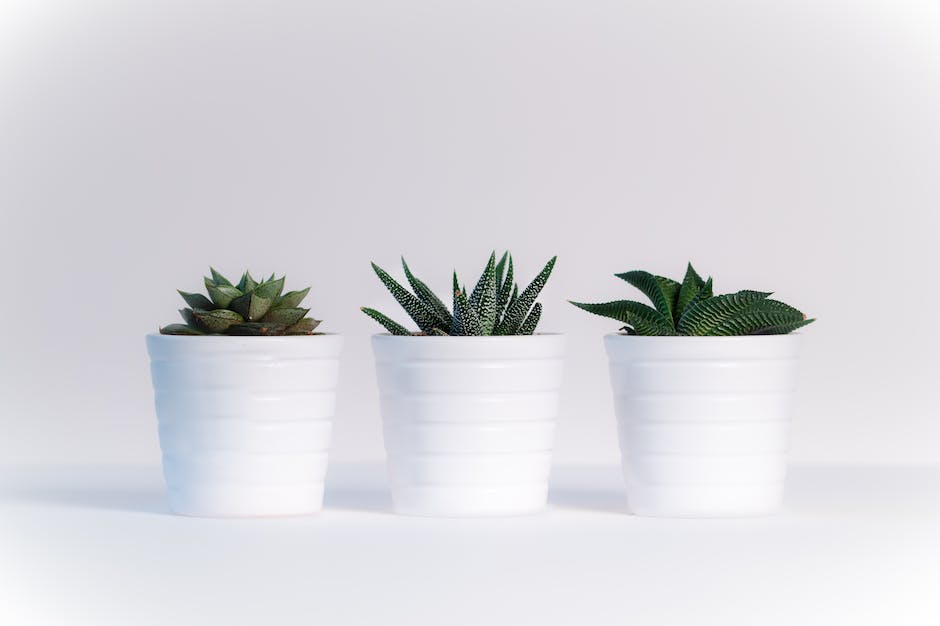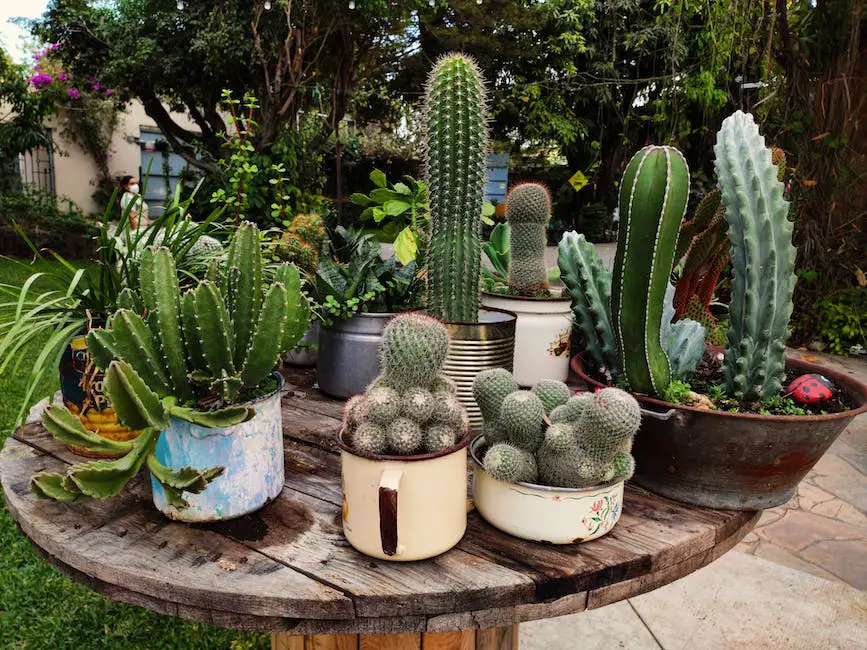Poisonous plants are those that produce toxins that can cause harm to an animal if ingested. Some plants, like the sago palm, are extremely poisonous to both people and animals if eaten. Others, like the succulent Kalanchoe, contain toxins that can cause vomiting and diarrhea if eaten in large quantities. Some plants, like lilies, are poisonous to cats if ingested. The symptoms of plant poisoning in cats can range from mild to life-threatening, and include vomiting, diarrhea, drooling, lethargy, and difficulty breathing. If you suspect your cat has ingested a poisonous plant, contact your veterinarian or the ASPCA Animal Poison Control Center immediately.
Most succulents are not poisonous to cats. However, some types of succulents can be toxic to cats if they eat them. If you have a cat and you are considering getting a succulent, it is best to research the plant to make sure it is safe for your pet.
What happens if a cat eats a succulent?
If your cat has eaten a succulent, look for symptoms such as vomiting and diarrhea. Euphorbia and kalanchoe can cause hypersalivation and oral irritation, and their effects are immediate. If your cat has come into contact with the plant, they may also experience eye irritation.
If you have any of these plants in your home, be sure to keep them out of reach of your pets. Even if your pet doesn’t eat the plant, they could be poisoned if they lick it or chew on the leaves.
Are succulents OK around cats
One of the benefits of owning succulents is that they are safe for animals. Most animals instinctively avoid eating succulents because they don’t smell or taste very appetizing. This makes them a great option for people who want to have both pets and plants in their home.
Euphorbia succulents and Kalanchoe succulents are both potentially toxic if touched or eaten. Symptoms of toxicity include nausea, vomiting, and diarrhea. If you suspect that you or someone you know has come into contact with these plants, it is important to seek medical attention immediately.
How do I stop my cat from eating succulents?
You can make a natural insecticide at home using vinegar, orange, lemon, cayenne pepper or chili pepper. Simply sprinkle pepper on your succulents or mix it with water and spray it on your plants. You can also use diluted lemon or orange juice or white vinegar.
If your cat has ingested a poisonous plant, symptoms of poisoning may include: difficulty breathing, drooling, difficulty swallowing, excessive drinking, frequent urination, overall weakness, or irregular heartbeat. If you suspect your cat has been poisoned, please contact your veterinarian or local emergency clinic immediately.
What is the most toxic plant to cats?
Many lilies are poisonous to cats, including Asiatic lilies, Easter lilies, Japanese show lilies, rubrum lilies, stargazer lilies, red lilies, tiger lilies, Western lilies, wood lilies, and daylilies.
Make sure to keep these plants out of reach of your cat, as they can be very harmful if ingested. If you suspect your cat has eaten any of these plants, please contact your veterinarian immediately.
Is an aloe vera plant poisonous to cats
Aloe vera is a common household plant that is known for its health benefits. The juice and pulp of the plant can be used to treat a variety of conditions in people, but it is highly toxic to cats. If you have a cat, it is important to keep this plant out of reach to prevent accidental ingestion.
Jade plants can cause vomiting, diarrhea, lethargy, and inappetence if ingested. Pencil cactus can cause similar symptoms. If you have a jade plant or pencil cactus, keep it out of reach of children and pets.
Is it OK to have toxic plants around cats?
If you’re looking for a list of safe plants and flowers for your cat, the ASPCA has a great resource. their website includes a searchable database of plants and flowers that are safe for cats.
Some plants that are typically thought of as being safe for cats can actually be toxic for them. Aloe vera, for example, can be harmful if your cat ingests it. Other plants that may be toxic to cats include: flowering plants like amaryllis, daffodil, and hyacinth; poinsettia; and Asian lily, day lily, and Rubrum lily. If you have any of these plants in your home, it’s best to keep them out of reach of your cat.
Why shouldn’t you touch succulents
If you come into contact with the sap of a Euphorbia plant, you may experience a rash. It is best to wear gloves when handling these plants to avoid contact with the sap. You should also avoid ingesting the sap or any part of the plant.
Spider plants are non-toxic to both cats and dogs, according to both the ASPCA and the National Capital Poison Center.
Do succulents clean air in house?
If you’re looking to purify your air and improve your indoor air quality, succulent plants are a great option! These plants can help remove toxins, improve airflow, and humidify dry air. So if you’re already a succulent plant owner, you’re on the right track!
If you have cats, it’s important to provide them with plenty of toys and entertainment to keep them occupied. A bored cat is more likely to nibble on your succulents than one that is kept busy. In addition to keeping your cats entertained, this will also help them stay healthy and Fit.
Why is my cat obsessed with eating plants
If your cat is eating plants or soil, it could be a sign that they are lacking some essential nutrients in their diet. This behavior can also be a symptom of gastrointestinal issues, so it’s best to have your cat evaluated thoroughly just to be sure.
If you have a plant in your home that your cat never seems to leave alone, a good way to keep him or her away is by sprinkling chili powder on the leaves. Lightly dust the plant with the spice and you’ll soon notice that your cat will avoid it altogether.
How long does it take for a cat to show signs of poisoning
If a cat ingests or comes in contact with a toxin, symptoms may not show up right away. Some toxins may take 3 to 4 days to show any effects. The types of symptoms a cat will exhibit will depend on the toxin she has been exposed to.
If your pet ingests any plants, it’s important to take them to the vet right away. Even just a few leaves or petals can be dangerous, and waiting more than 18 hours can lead to kidney failure.
How long does plant toxicity last in cats
If your cat is not eating and you think they may have ingested something poisonous, it is best to take them to the vet right away. Some poisons can cause serious side effects that last up to 48 hours.
The ASPCA has a list of 17 top toxic plants that you should keep your cat away from. Some of these plants include: lilies, marijuana, sago palm, tulip/narcissus bulbs, azalea/rhododendron, oleander, and castor bean.
What plants make cats go crazy
Catnip and silver vine are both known to contain chemical compounds called iridoids, which protect the plants against aphids. These compounds are also known to be the key to the euphoria produced in cats.
Some common toxic plants include the Amaryllis, Autumn Crocus, and Azaleas. These plants can cause a variety of symptoms including tremors, seizures, vomiting, and changes in blood pressure. If you are exposed to any of these plants, it is important to seek medical attention immediately.
What houseplants can I have if I have a cat
Some plants are safe for both cats and dogs, while others may be safe for one but not the other. The following is a list of 21 plants that are safe for both cats and dogs:
Rattlesnake Plant
Spider Plant
Parlor Palm
Calathea Orbifolia
Ponytail Palm
Succulents
African Violet
Bird’s Nest Fern
Speaking from personal experience, I can attest to the fact that cats have a strong distaste for anything citrus. I use a lemon juice, lime, or orange diluted with water mixture as a feline repellent for my plants. If you don’t want to make your own mixture, Bodhi Dog makes a Bitter Lemon Spray that does the trick.
What plants cause kidney failure in cats
There are many different types of plants that can be poisonous to cats if they consume them. However, only plants belonging to the genera Hemerocallis and Lilium have been shown to cause kidney failure in cats. Symptoms of plant poisoning in cats include vomiting, diarrhea, loss of appetite, and lethargy. If you think your cat has consumed a poisonous plant, it is important to take them to the vet immediately.
Lavender is toxic to cats and can cause serious health problems if they consume it in any form. Signs of lavender toxicity in cats include diarrhea, vomiting, and weakness. If you notice any of these signs in your cat, seek immediate medical attention.
Conclusion
There is no simple answer to this question as there are over 60,000 species of succulents and many of them are toxic to cats if ingested. The best way to determine if a specific succulent is poisonous to cats is to consult a reliable source such as the ASPCA’s Animal Poison Control Center.
Yes, succulents are poisonous to cats. If your cat ingests a succulent, they may experience vomiting, diarrhea, and lethargy. If you suspect your cat has eaten a succulent, please contact your veterinarian immediately.






